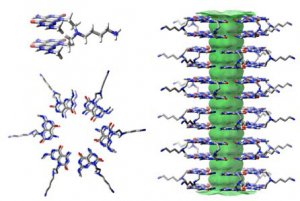A professor (Michael Wieser) at the University of Calgary is making a bit of a splash, so to speak, with his contributions to the changes being made to the periodic table of elements. According to the Dec. 15, 2010 news item on the CBC News website,
Science’s ubiquitous periodic table of the elements is getting a fresh face courtesy of a team led by an Alberta researcher.
As part of the revamp, the atomic weights of at least 10 elements — among them oxygen, carbon and nitrogen — are to be restated, said Michael Wiesner [sic], an associate professor at the University of Calgary.
The update is meant to better reflect how the elements vary in the natural world.
To start with, an international group of scientists will restate the weights of 10 elements, classifying them as a low and a high, known as an interval. The interval varies depending on where the elements are found in nature.
“These are the 10 where we’ve completed the review,” Wieser said on Tuesday. “There’s another series we’re working on right now.”
Apparently, this is the first revision of this type (there have been many additions and moves) to the table since it was developed in 1869 by Mendeleev. (The table is attributed to Dmitri Mendeleev although the history of its development is a little more complicated than I have time for here. Sam Kean’s book, The Disappearing Spoon: And Other True Tales of Madness, Love, and the History of the World from the Periodic Table of the Elements, goes into more detail about it all.)
The implications of these 2010 changes are quite interesting,
Wiesner [sic], who is secretary of the Commission on Isotopic Abundances and Weights for the International Union of Pure and Applied Chemistry, has co-authored a paper outlining the revisions in the journal Pure and Applied Chemistry.
“People have used atomic weight data to look at nuclear processes occurring in the solar system … we can say something about the formation of the solar system and the planets,” he said.
“People are probably comfortable with having a single value for the atomic weight, but that is not the reality for our natural world.
As noted in the Dec. 15, 2010 news item on physorg.com, an impact will be felt in the classrooms,
“Though this change offers significant benefits in the understanding of chemistry, one can imagine the challenge now to educators and students who will have to select a single value out of an interval when doing chemistry calculations,” says Dr. Fabienne Meyers, associate director of IUPAC.
Not all elements will undergo changes (from physorg.com),
Elements with only one stable isotope do not exhibit variations in their atomic weights. For example, the standard atomic weights for fluorine, aluminum, sodium and gold are constant, and their values are known to better than six decimal places.
I think someone got a little overexcited about this,
For the first time in history, a change will be made to the atomic weights of some elements listed on the Periodic table of the chemical elements posted on walls of chemistry classrooms and on the inside covers of chemistry textbooks worldwide. [emphasis mine]
The periodic table of elements is an intellectual construct which was developed in the mid-19 century. For me and most folks, science provides our best guesses but very rarely any certainties. Gravity is a law of physics at the macro level (unless someone manages to prove differently) but when you’re talking about the quantum world, we believe and it seems to be true, experimentally, that a whole other set of rules apply.
